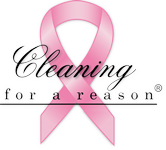Hydrogen Peroxide for Cleaning: Substitute and Disinfectant
In part one of this two-part blog series, we went over some basics on the numerous areas of the home where hydrogen peroxide is a useful cleaning solution. While it was first invented as a wound disinfectant and still may be used for that purpose, hydrogen peroxide has become one of the single most reliable household cleaning solutions as well, with uses in several relevant areas.
At Healthy Homes Housekeeping, we regularly use solutions like hydrogen peroxide and other cleaners for numerous needs, from standard house cleaning to deep cleaning, move-in and move-out services and many others. Even in addition to standard cleaning themes, there are a variety of ways you can use hydrogen peroxide to your benefit in the home; here are a few additional unique uses of hydrogen peroxide to consider.
Bleach Substitute for Laundry
If you typically use bleach in your laundry but are currently out, one simple alternative is using hydrogen peroxide. Simply pour in a cup of hydrogen peroxide along with your white laundry to remove stains, then let it sit for at least 10 or 15 minutes before you start the machine.
In other cases, you might use it to remove smells from towels. Particularly if your towels have become musty or mildew-y, hydrogen peroxide in the wash does a great job removing this effect.
Sponge Disinfectant
Do you like to recycle your sponges through fully so you aren’t wasting materials? A great method for regularly disinfecting the sponge to keep it clean and useful is to use hydrogen peroxide.
Ideally, this will be a 50-50 mixture of hydrogen peroxide with warm, but not boiling, water. Create this mixture and then soak the sponges in it for about 10 minutes. Once this is finished, thoroughly rinse each sponge you’ve soaked.
Fruits and Veggie Cleanliness
Another set of items you can easily clean and sanitize with hydrogen peroxide: Fruits and vegetables, which may have bits of dirt or even pesticides still attached to them. Create a mix of a quarter-cup hydrogen peroxide with a full sink of cold water – wash the produce in the sink first, then rinse it thoroughly with cold water to remove both the peroxide and any contaminants.
Plant Fungus Prevention
Finally, speaking of contaminant prevention, do you have plants in your home that are susceptible to fungus risks? There are a variety of such plants, and one simple way to keep them protected is to use a tiny amount of hydrogen peroxide in a water-filled spray bottle. Lightly mist plant leaves with this solution, and you’ll be lowering the risk of fungus growth on any areas you hit.
For more on the numerous uses of hydrogen peroxide throughout the home, or to learn about any of our housekeeping services, speak to the staff at Healthy Homes Housekeeping today.



